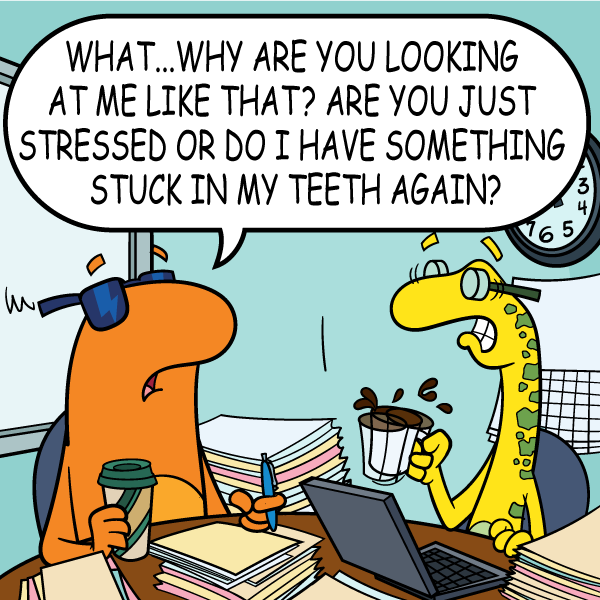
Tips for team leaders in stressful times
Stress has always been a problem in the workplace, but rarely has it skyrocketed as it has in the 2020s. With so much change, our brains tilt to the max with environmental rife around us. The most worrying aspect of this problem is the considerable effect of stress on our teams’ health. Even before 2020, Forbes reported that workplace stress was on the rise and has increased significantly in the last three decades. Technology has increased the speed of work exponentially, and it’s simply hard to keep up with the pace of work today. Worse, this stress is contagious and spreads unless leaders know how to recognize it and use laser coaching techniques to address and reframe it rapidly.
What is stress?
Stress is the physical and psychological reactions to events (stressors) that seem overwhelming. When most people talk about stress, they refer to bad stress (called distress), but stressors can also be positive and motivational. For example, events like promotions can be stressful, but many people actively seek this stressor. Differences in interpreting potential stressors demonstrate another critical feature of stress - it is highly individualized. The same event could be understood positively by one person and negatively by another. The interpretation often depends on the resources each individual has available to deal with the stressor. A promotion when you already think you don’t have enough time to meet your responsibilities can seem overwhelming. Thinking about stress as a complex interaction between environmental stressors and the characteristics of the individual is necessary to learn to minimize unnecessary distress.
The effects of stress on our teams
As a team leader, we must keep a close eye on the effects of stress on our top talent and coach them as quickly as possible. What are the most common clues? The list is long. Recent stats from the American Institute of Stress reports that physical effects can show up in numerous forms of pain, like headaches, backaches, neck aches, increased heart rate, fatigue, weakened immune systems, insomnia, stomach aches, and weight gain. Emotional effects are common too. Signs to watch for include: anxiety, depression, anger, irritability, restlessness, racing thoughts, trouble with sleep, problems with memory or focus, lousy decision-making, overwhelm, demotivation, and general loss of engagement.
The impact on team performance
Job stress is not only detrimental to individuals but also organizations. Stress can impact everyday performance when people are in pain or if they are in a bad mood. It can also have substantial effects at the organization level. According to the American Institute of Stress, job stress costs U.S. companies over $300 billion a year! In your team, this can show up as people skipping work, getting sick, not working as hard, or even quitting. As a team leader, we should be especially concerned about our most talented team members looking for other positions when stress starts to bleed over into their personal lives. As a leader, your job is to create a culture where your people love to work. Doing so helps them to focus on the contributions that they have to make to their profession versus being distracted by people dynamics that distract them from being productive.

How to help your team
As a team leader, we are responsible to the organization for our team’s performance and our team members as individuals. Our job is to define our team’s culture and provide a place where they can work effectively, including mitigating stress. The following steps will help you address stress in your team.
1. Recognize stress
The first step in helping team members through stress is recognizing when it happens. Looking at the long list of signs above might feel overwhelming. And stress looks different for different people because an individual’s personality influences the experience of and reactions to stressors. This distinction for individual differences means you have to know each team member to understand recognize how their stress manifests. At Tilt, we’ve noticed distinct patterns of tension that are common to different personality patterns. The profiles include Micromanaging, Impulsivity, Overwhelm, and Analysis Paralysis.
2. Find the cause of the stress
Many large-scale stress management initiatives focus on how people can minimize the adverse effects of stressors. Programs including meditation, exercise, and cognitive behavioral therapy are useful for decreasing the consequences, but fail to address what causes stress in the first place. Many of the familiar sources of work stress at work include issues that can be resolved by team leaders. For example, people often complain about tedious work, meetings (and now zoom meetings), not having any control in their jobs, or understanding their role expectations. Giving sufficient autonomy and clear goals are best practices for leaders, and it can reduce stress. Again, it is essential to keep individual preferences in mind. What may be a source of anxiety for one person may be what another person wants.
3. Address the cause with the person in mind
Once you know which stress reaction you see, Micromanaging, Impulsivity, Overwhelm, and Analysis Paralysis, you need to consider the right way to address it based on the underlying cause. As you might imagine, addressing stress with someone who feels the need to take over projects and push them forward the same way as someone who is too overwhelmed to do anything won’t be effective. Our method for addressing stress is first to accept the stress reaction symptoms while reaching underneath to find the golden nugget of truth. After all, no one experiences stress without first being triggered by a personal fear. The key is to avoid getting triggered yourself when addressing a stress reaction in someone else. Let them know you notice their stress and want to understand the value of what’s underneath it.
Leadership in times of stress
Stress has always been a concern at work. Especially now, with the increased stressors of a global pandemic, potentially working from home for the first time, and the social and political climate, it is even more important to recognize and manage stress. What it requires in terms of leadership is courage and leadership with agility. More than ever, we have to confront discord quickly and refocus our teams on productive relationships.
What to do as a leader in such circumstances? Our findings demonstrate that the leader who stays centered in inner confidence amidst the chaos is best at managing others’ fears. They exude agility, face reality, and focus on the opportunity instead of the problems around them. They understand the importance of laser coaching as a skill set that keeps the team focused on the most critical priorities.
How can you actually use this?
Remember that understanding your team members as individuals is essential for managing team stress. We recommend starting by taking the True Tilt Personality Profile™ by yourself. The report offers helpful insights into your natural patterns and how you interact with others. After you understand your tendencies, ask your team to take the assessment, and generate a Team Climate Profile™. This report shows team leaders the natural patterns of their team members and how they can work well or poorly together.





